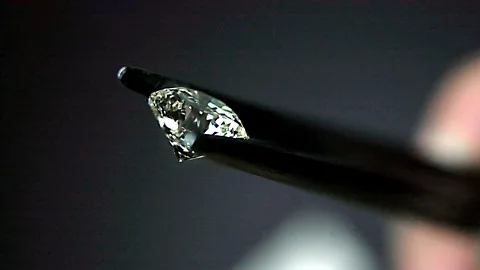In recent years, lab-grown diamonds have emerged as an innovative and sustainable alternative to traditional mined diamonds. These diamonds are created in a laboratory under controlled conditions that mimic the natural processes that form diamonds deep within the Earth. As the demand for ethical and environmentally friendly products grows, lab grown diamonds and cultures are gaining traction in various cultures and industries around the world. In this article, we will explore the concept of lab-grown diamonds, their rise in popularity, and how they are influencing cultures globally.
What Are Lab-Grown Diamonds?
Lab-grown diamonds, also known as man-made diamonds, are diamonds that are created in a laboratory using advanced technology. These diamonds share the same chemical composition, physical properties, and appearance as natural diamonds. The process involves recreating the high-pressure, high-temperature conditions or using chemical vapor deposition (CVD) to grow a diamond crystal. Unlike traditional diamonds, which are formed over millions of years deep within the Earth, lab-grown diamonds are produced in a matter of weeks or months.
Man-made diamonds have sparked interest due to their ethical appeal. The traditional diamond mining industry has been associated with human rights abuses, environmental degradation, and conflict financing, leading many consumers to seek out more sustainable alternatives. Lab-grown diamonds provide a solution to these concerns while offering the same aesthetic qualities as their natural counterparts.
The Growth of Lab-Grown Diamonds in Popular Culture
Lab-grown diamonds have begun to make their mark in popular culture, challenging the traditional notion of what makes a diamond valuable. For decades, diamonds have been seen as a symbol of love, commitment, and status. The iconic “diamonds are forever” campaign has cemented their place in culture as the ultimate symbol of luxury. However, with the rise of lab-grown diamonds, this perception is shifting.
As consumers become more conscious of the environmental and social implications of their purchases, they are turning to lab-grown diamonds as a more ethical choice. Celebrities and influencers have also helped to boost the visibility of man-made diamonds, with many choosing to wear them for their engagement rings and red carpet appearances. This has led to a growing acceptance of lab-grown diamonds, especially in cultures where ethical consumerism is a top priority.
Lab-Grown Diamonds in Various Cultures
The impact of lab-grown diamonds is not limited to any one region or culture. Around the world, people are beginning to recognize the benefits of lab-grown diamonds, particularly in cultures that emphasize sustainability and ethical practices. In countries where environmental awareness is high, such as Sweden and Canada, the adoption of lab-grown diamonds is increasing rapidly.
In cultures that prioritize tradition and status, however, there may be more resistance to the idea of man-made diamonds. The perception of diamonds as rare, natural treasures holds significant cultural weight in many societies. As a result, the acceptance of lab-grown diamonds may be slower in these regions. However, as awareness grows and the technology behind man made diamonds continues to improve, it is likely that these cultural barriers will continue to diminish.
The Environmental Benefits of Lab-Grown Diamonds
One of the most compelling reasons for the growing popularity of lab-grown diamonds is their environmental impact. Traditional diamond mining requires the excavation of vast amounts of earth, leading to habitat destruction, soil erosion, and the consumption of significant amounts of water and energy. In contrast, lab-grown diamonds have a much smaller carbon footprint and do not contribute to environmental degradation.
Many consumers, particularly in cultures that value sustainability, are choosing lab-grown diamonds as a way to reduce their environmental impact. By opting for man-made diamonds, buyers are supporting a more responsible industry that does not rely on the harmful practices associated with traditional mining. This is especially important in the modern age, where environmental consciousness is an integral part of many people’s lifestyles.
Man-Made Diamonds and the Jewelry Industry
The jewelry industry has been significantly affected by the rise of lab-grown diamonds. As more consumers opt for these ethically sourced alternatives, traditional jewelers are adapting to meet demand. Many renowned jewelers now offer lab-grown diamond collections alongside their natural diamond offerings, allowing customers to choose based on their values and preferences.
Lab-grown diamonds are also reshaping the economics of the diamond market. While man-made diamonds are often less expensive than mined diamonds, they still offer the same visual and physical qualities, making them an attractive option for consumers seeking value for their money. This shift in the market is influencing both the production and consumption of diamonds, changing the way cultures approach luxury and status symbols.
The Future of Lab-Grown Diamonds in Global Cultures
Looking ahead, the future of lab-grown diamonds seems promising, with continued growth expected in various cultural contexts. As awareness of the ethical and environmental benefits of man-made diamonds spreads, more people across the globe will likely consider these diamonds as a legitimate alternative to mined diamonds.
Cultural attitudes towards lab-grown diamonds will continue to evolve, with some societies embracing the change more rapidly than others. However, the ongoing advancements in technology and the increasing availability of lab-grown diamonds suggest that their presence in global cultures will only continue to grow. As the demand for more sustainable and ethical products increases, lab-grown diamonds may become a cornerstone of the jewelry industry in the coming decades.
In conclusion, lab-grown diamonds represent a shift in both the diamond industry and cultural attitudes towards luxury, sustainability, and ethics. As man-made diamonds become more widely accepted, their cultural impact will continue to grow, reshaping how people view diamonds and the values they associate with them. Whether driven by environmental concerns, ethical considerations, or the desire for a more affordable option, lab-grown diamonds are poised to have a lasting effect on cultures around the world.


